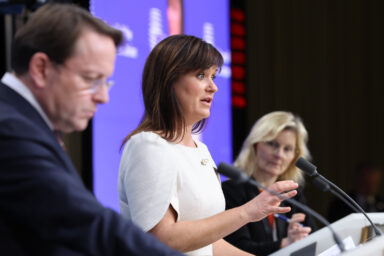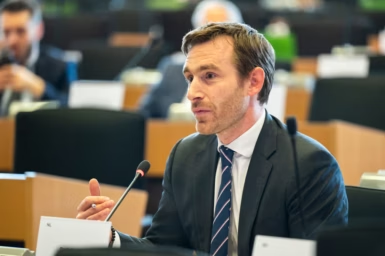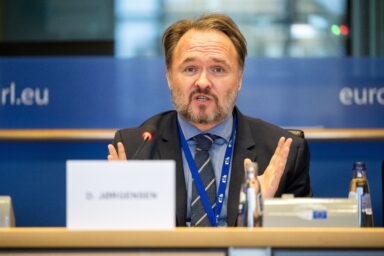EU Mission: Cancer is moving from coordination to delivery. As it reaches its halfway point to 2030, new pilots, data platforms and prevention tools are poised to shape its second phase.
Over the next three years, flagship projects such as UNCAN.eu and the European Cancer Patient Digital Centre (ECPDC) will be embedded within the European Health Data Space. National mission hubs and country-specific pilots are working to close the cancer survival gap across member states. Yet insiders say the mission’s future impact will depend on political and financial continuity. Especially as cancer priorities transition under the upcoming European Competitiveness Fund and Horizon Europe’s successor, FP10.
The Mission was launched to better connect cancer research and innovation with Europe’s health policies. It links prevention, care and data across member states. Joint implementation between research and health authorities has strengthened coordination between ministries. The national Cancer Mission hubs established in 2023 now act as bridges between EU-level strategies and domestic action plans.
But insiders say progress on the ground remains uneven. National governments remain cautious about adopting a “mission approach” to health. With incentives for long-term investment still taking shape, much of the mission’s progress so far lies in coordination and pilot projects rather than nationwide reform.
You might be interested
Digital transformation takes centre stage
A central focus for the coming phase will be the Mission’s digital infrastructure. The UNCAN.eu platform is creating a network of cancer data hubs across Europe to support cross-border research and data sharing. Alongside it, the European Cancer Patient Digital Centre (ECPDC) will give patients and survivors secure access to trusted information and tools to manage and share their own data.
Both initiatives are designed to align with the European Health Data Space once it becomes operational. Insiders say these projects signal a shift from fragmented data systems toward a more coherent European cancer data network. But uneven digital capacity and governance across Member States continue to slow their rollout.
The EUonQoL project, which measures quality of life for people living with or beyond cancer, is also expanding. All Cancer Mission projects use participatory research, involving citizens and patient communities to ensure end-user perspectives shape the science.
Prevention and early detection remain cornerstones
Roughly 40 per cent of cancer cases in the EU are considered preventable, and prevention remains the Mission’s strongest lever. In 2024, the EU adopted Council Recommendations promoting HPV and Hepatitis B vaccination and new measures for smoke- and aerosol-free environments, giving prevention fresh political momentum.
The fifth edition of the European Code Against Cancer, due by the end of 2025, will refresh public recommendations on behavioural and environmental risk factors such as diet, physical activity, tobacco use and pollution. Projects like 4P-CAN, which use citizen participation to test digital prevention models, are shaping the evidence base for population-level health promotion.
Still, observers note that prevention outcomes remain uneven across member states. A Council Recommendation on cancer screening, adopted in 2022, updated EU guidance for member states. The Joint Action EUCanScreen, launched in 2024, is now implementing those principles. It’s piloting risk-based screening for lung, prostate and gastric cancers while improving established programmes for breast, colorectal and cervical cancers.
To raise awareness, the Mission has experimented with community-based campaigns such as a 2024 roadshow in Lithuania, Poland and Romania that reached nearly 11 million people. A forthcoming Cardiovascular Health Plan, now in preparation, is expected to build on these prevention approaches to address shared risk factors across major non-communicable diseases.
Strong science, slow scale-up
Europe’s cancer research capacity remains robust, but translating discovery into innovation continues to lag. Through the European Cancer Imaging Initiative, the EU is working to bring AI-driven imaging into clinical use. Horizon Europe is also backing new projects in machine learning and biomarker-guided diagnostics.
However, Europe is losing ground in several high-growth fields. Patent data show Europe losing ground in cellular immunotherapy, gene therapy and imaging analytics compared with the US and China. Clinical trial capacity also remains constrained by regulatory complexity and limited investment. Observers say the Mission’s next stage must focus as much on translating research into access as on discovery itself.
Bridging Europe’s survival gap
Reducing inequalities in cancer prevention, diagnosis and care remains a central challenge. With the European Cancer Inequalities Registry mapping disparities across Europe, new national pilots for comprehensive cancer centres are being prepared to reach regions most in need.
Launching in November 2025, EUNetCCC will connect Europe’s cancer centres to expand multidisciplinary care.
Launching in November 2025, EUNetCCC will connect Europe’s cancer centres to expand multidisciplinary care. At the same time, eCAN Plus will extend telemedicine and digital training, and seven new Networks of Expertise under JANE-2 will link high- and low-resource regions. The Widening Programme under Horizon Europe is also strengthening research capacity through 32 projects in newer member states.
Observers note that progress on equity will depend on national investment in oncology capacity, infrastructure, workforce and technology, as much as on EU coordination.
Priorities include embedding UNCAN.eu and ECPDC within the European Health Data Space, expanding large-scale genomic and environmental studies to identify high-risk groups, and deploying pragmatic clinical trial programmes across the EU and associated countries.
Next phase: implementation and funding transition
The Mission’s next phase will consolidate its prevention and digital pillars while scaling clinical research. Priorities include embedding UNCAN.eu and ECPDC within the European Health Data Space, expanding large-scale genomic and environmental studies to identify high-risk groups, and deploying pragmatic clinical trial programmes across the EU and associated countries. Greater emphasis on behavioural implementation science will aim to translate prevention research into sustainable population-level interventions.
From 2028, health programmes are expected to move under the European Competitiveness Fund, part of the next Multiannual Financial Framework (2028–2034). Cancer priorities currently funded under Horizon Europe are expected to continue under FP10, benefiting from future windows on Health, Biotech and Digital within that fund. According to the draft MFF framework, cancer remains one of the tracked indicators under health promotion and disease prevention, though stakeholders fear it could lose visibility compared with today’s dedicated EU4Health stream.
Political commitment, reflected in recent Commission mission letters, will be essential to maintain momentum.
The road to 2030
If the Mission could achieve one defining breakthrough by 2030, insiders say it would be shifting diagnosis from late- to early-stage disease. Detecting cancers such as pancreatic, ovarian and lung earlier could dramatically improve survival and reduce treatment costs.
That ambition encapsulates the Mission’s next challenge: transforming a well-coordinated European framework into measurable, equitable outcomes for patients across the continent











